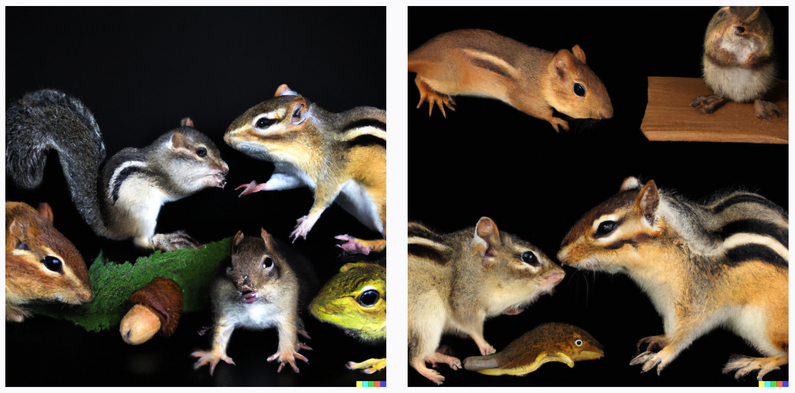How to disappear a platypus
I was testing DALL-E 2 to see if it would be subject to some common incorrect assumptions about the sizes of things. For example if you asked people what size a kiwi bird is, they tend to assume it's a smallish bird, maybe around the size of a kiwi fruit. In reality a kiwi bird is surprisingly large, about the size of a full-grown chicken.
When I tested DALL-E 2, it generated tiny kiwi birds. (and white scientists, which is a pattern people have noticed).

The kiwi birds would get even smaller if pictured next to a kiwi fruit.

I wanted to see if DALL-E's images match other common misconceptions around animal sizes.
People who are more familiar with either hedgehogs or porcupines may not realize that the two spiky animals are very different sizes. A hedgehog could nestle comfortably in the palm of your hand; you would need to carry a porcupine in both arms (neither is advisable).
Would DALL-E 2 generate them as different sizes?

There are two differently-sized animals in some of these, but I see only hedgehogs (with the exception of that random dog). I verified that this happens even if I ask for the porcupine first, and also verified that DALL-E 2 can generate a recognizable porcupine, as long as it's on its own:

Something about the pairing with a hedgehog makes the porcupine disappear.
I noticed a similar effect with beavers and platypuses. A platypus might be the length of your forearm, whereas a full-grown beaver could stretch from your ankles to your armpits. I tried to get DALL-E 2 to picture them next to each other to see how it would treat their relative sizes.

No platypus, only (sort of) beavers!
But surely it can do a platypus on its own?


I think I have discovered the worst living mammal attempt I've seen from DALL-E 2. Interesting that it's an unusual, but not that uncommonly photographed, creature. In some cases it leaves the duckbill out entirely.
I've seen this often in image-generating and even text-generating machine learning algorithms: it sands down the jagged edges of anything that's unusual, bringing it more in line with the norm. Large birds? It generates them smaller. Mammals with beaks? It generates them without. Two animals next to each other? They might wind up as the same animal. AI's happy spot is where everything is the same.
Bonus content: the okapi, a weird forest giraffe relative, is resistant to disappearing.


